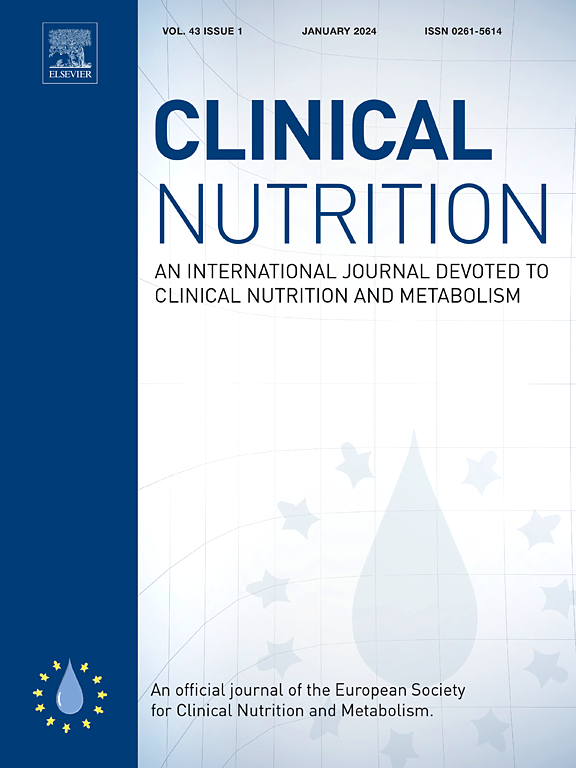A comprehensive comparison of two commonly used BMI thresholds for non-communicable diseases and multimorbidity in the Chinese population
IF 6.6
2区 医学
Q1 NUTRITION & DIETETICS
引用次数: 0
Abstract
Background & aims
Various body mass index (BMI) thresholds are used to classify overweight and obesity in the Chinese population. We compared two commonly applied BMI classifications for Chinese population: World Health Organization (WHO) criteria (overweight: BMI≥23 kg/m2; obesity: BMI≥25 kg/m2) and China Working Group criteria (overweight: BMI≥24 kg/m2; obesity: BMI≥28 kg/m2) across 14 non-communicable diseases and multimorbidity.
Methods
This research utilized data from the China Health and Retirement Longitudinal Study at baseline and after 9 years of follow-up (2011–2020). The sample comprised of 13,519 individuals in 2011 (mean age: 59 (10) years, mean BMI: 23.4 (3.6) kg/m2, female: 53.20 %), with 9841 followed up in 2020. BMI classifications were: a. normal weight (18.5≤BMI<23) vs. borderline overweight (23≤BMI<24) vs. overweight (BMI≥24) b. non-obesity (18.5≤BMI<25) vs. borderline obesity (25≤BMI<28) vs. obesity (BMI≥28). Borderline categories represented the overlapping between the two classifications. Cox proportional hazards model was used to evaluate the associations between weight status (including borderline weight) and multiple diseases, using both WHO and China criteria for BMI thresholds. Sensitivity analyses excluded smokers, those diagnosed within the first 2 years in prospective analysis, and those diagnosed within the past three years in cross-sectional analysis, respectively. Subgroup analysis by gender and age was conducted.
Results
Overweight prevalence was 50.99 % based on WHO criteria and 40.10 % based on China criteria. Obesity prevalence was 30.65 % and 10.97 %, respectively. BMI exhibited a positive or J-shaped association with multiple cardiometabolic factors (ie, hypertension, dyslipidemia, diabetes, heart disease, stroke) and multimorbidity. Individuals with normal weight experienced a lower risk of hypertension, dyslipidemia, diabetes [hazard ratio (95 % confidence interval): 0.71 (0.60–0.83), 0.71 (0.59–0.84), 0.64 (0.50–0.81), respectively] compared to those with borderline overweight.
Conclusions
Different BMI classifications greatly affect overweight and obesity estimates and have implications for predicting morbidity and mortality. Although using the China Working Group's lenient BMI threshold (BMI<24 for normal and <28 for overweight) may help prevent multimorbidity and most NCDs, using the WHO's stricter BMI thresholds (BMI<23 and BMI<25 respectively) may offer even greater cardiometabolic benefits.
求助全文
约1分钟内获得全文
求助全文
来源期刊

Clinical nutrition
医学-营养学
CiteScore
14.10
自引率
6.30%
发文量
356
审稿时长
28 days
期刊介绍:
Clinical Nutrition, the official journal of ESPEN, The European Society for Clinical Nutrition and Metabolism, is an international journal providing essential scientific information on nutritional and metabolic care and the relationship between nutrition and disease both in the setting of basic science and clinical practice. Published bi-monthly, each issue combines original articles and reviews providing an invaluable reference for any specialist concerned with these fields.
 求助内容:
求助内容: 应助结果提醒方式:
应助结果提醒方式:


